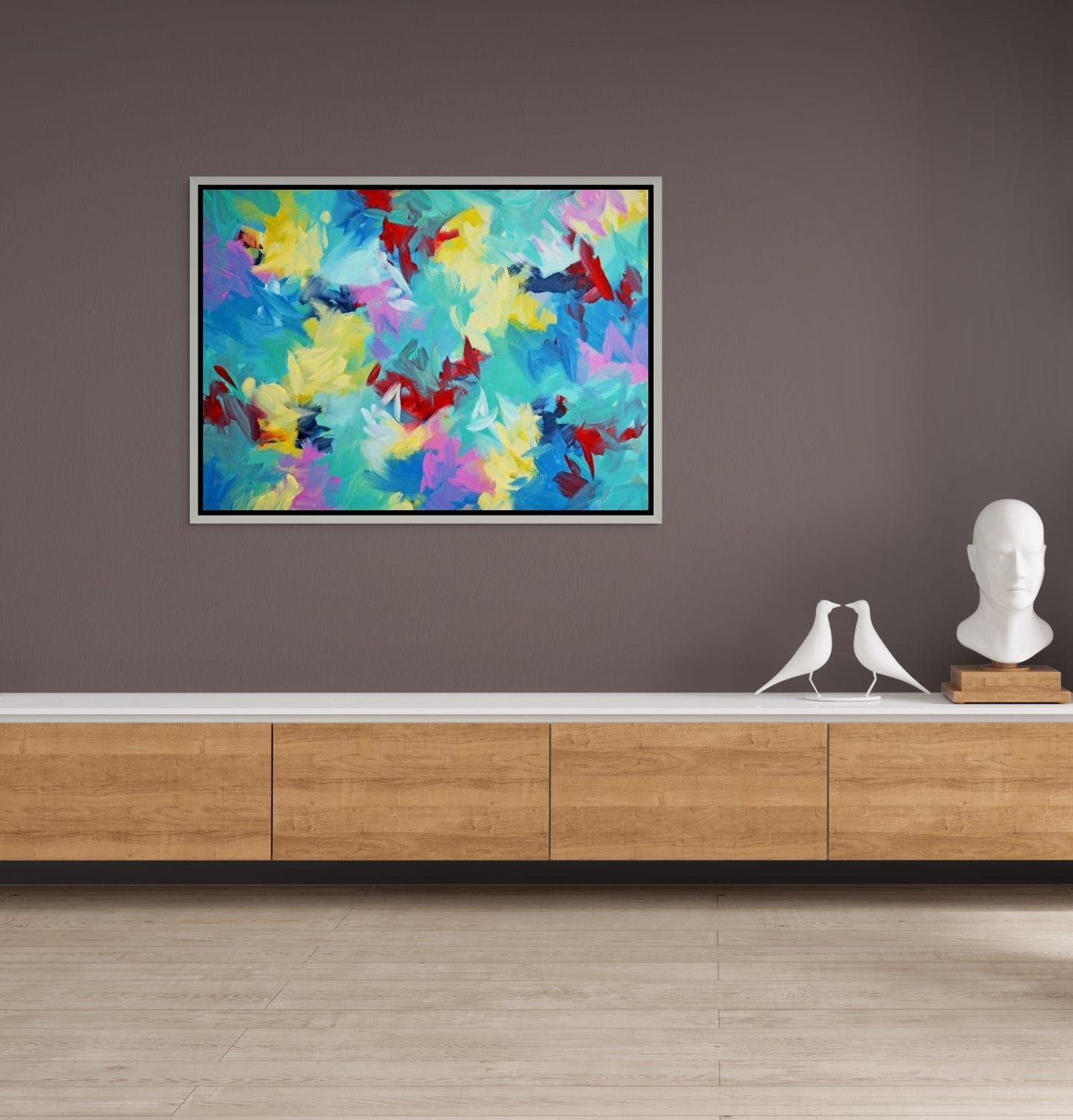Summer Flowers 36" x 48"
Summer Flowers 36" x 48"
See more paintings from The Colors of Joy collection.

In Summer Flowers, James Nowak continues his exploration of color, gesture, and abstraction within the Colors of Joy Collection. Unlike the overt musicality of Symphony Number 1 or the celebratory expansiveness of Joy to the World, this work engages more directly with organic associations. Through an energetic layering of brushstrokes, Nowak invokes the essence of blooming fields, capturing the vitality of summer without ever depicting a literal flower. The result is a painting that is at once abstract and deeply evocative, bridging sensation and memory.
The title Summer Flowers anchors the work in seasonal imagery, and the palette immediately reinforces this connection. Pastel lavenders, bright yellows, aquamarines, and lush reds intermingle across the canvas. Each hue appears less as an isolated form than as a fragment of a greater garden—petal-like gestures that coalesce into the suggestion of blossoms caught in breeze and sunlight.
The dominant turquoise and aquamarine create a cooling ground, reminiscent of open skies or leafy canopies, while the yellows radiate warmth, recalling sunlight scattering across petals. Reds and magentas punctuate the field like bursts of roses or hibiscus, their intensity counterbalanced by cooler blues and greens. Together, these colors produce not only a vision of summer but the feeling of being immersed in it—heat and coolness, brilliance and shade, vibrancy and softness.
The brushstrokes in Summer Flowers are looser and more playful than in many other works in the collection. They swirl and scatter, overlapping like petals carried by wind. The absence of hard edges allows colors to blur into one another, suggesting the way blossoms and foliage in nature overlap without strict boundaries.
The rhythm here feels distinctly organic. Unlike the orchestrated cadence of Symphony Number 1, this painting breathes like a meadow. There is no central anchor; instead, the composition unfolds outward in all directions, mirroring the way flowers proliferate unpredictably yet harmoniously across a landscape.
The emotional impact of the work lies not only in its chromatic intensity but in its evocation of memory and sensation. Summer Flowers does not depict specific flora; rather, it captures the impression of abundance, warmth, and ephemeral beauty. Viewers are reminded of the fleeting nature of summer—its brilliance, its transience, its ability to overwhelm the senses.
By abstracting flowers into color and gesture, Nowak taps into what Kandinsky once called the “inner necessity” of painting—the ability to distill feeling into form. Here, joy takes the shape of blossoms, but only as echoes and impressions. The viewer is left with not a garden, but the spirit of one.
Within the broader collection, Summer Flowers extends Nowak’s thematic exploration of joy by tying it to nature. Where earlier works celebrated universality through bold color fields and musical metaphors, this piece roots joy in seasonality, reminding us that happiness, like flowers, flourishes in cycles. It is an acknowledgment of temporality as much as celebration: the very intensity of color reminds us of the brevity of bloom.
James Nowak’s Summer Flowers is a radiant meditation on nature, color, and the fleeting brilliance of life’s most joyful moments. Through abstraction, he conveys not literal flora but the vitality and rhythm of summer itself. By blurring petals into pure gesture, he creates an image that is both universal and deeply personal, a field of memory and sensation where viewers can find their own blooms.
Ultimately, the work affirms the central ethos of the Colors of Joy Collection: that joy is not static but dynamic, not a fixed image but a living, shifting interplay of color, light, and emotion.

